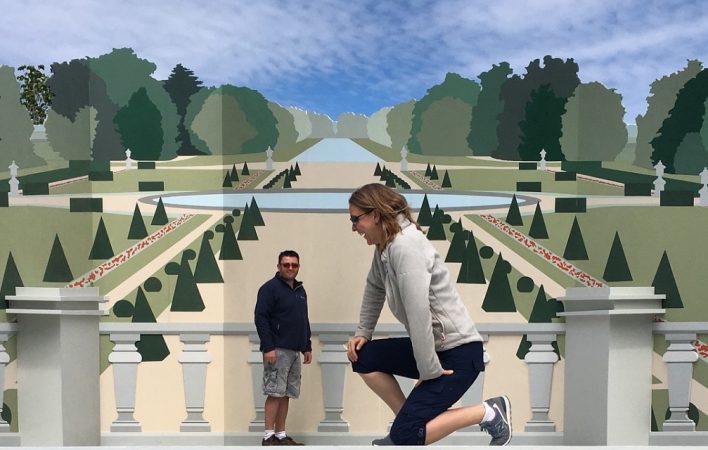

About the Artist

Meredith James’ sculpture is an optical illusion called an Ames room – a three-walled trapezoidal room built with a false perspective. What seems a believable space becomes implausible when a person walking from one side of the room to the other appears to grow or shrink. The logic of James’ sculptures and installations depend on the viewer’s interaction; it is only through an active process of looking – through peephole, camera, or door – that a piece becomes complete. In this artwork, both viewer and participant become part of the larger installation and the sculpture itself becomes a kind of stage for their actions.
To the naked eye, the sculpture looks like an off-kilter garden but when viewed from the viewfinder a few feet in front of the piece, the perfectly symmetrical garden frames the radically disproportional people within. Between walking around in the room and taking photographs through the peephole, visitors can experience a gap between what they perceive and what another sees. James has created a park within a park, placing her sculpture so that the Boston sky completes the illusion, merging sculpture with reality.
The garden imagery and sculpture title reference Alain Resnais’ 1961 film, Last Year at Marienbad. In the film, a woman’s fantasies and memories weave together opulent interiors and gardens into a seamless architectural labyrinth. The garden featured in both the film and this sculpture is the Nyphenburg Palace garden outside of Munich, Germany. James was drawn to shapes in symmetry and uses this as a geometrical tool to aid the illusion in her Ames room.
Materials: Wood, metal, and acrylic paint




